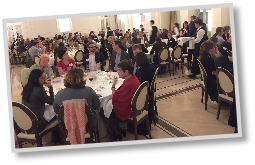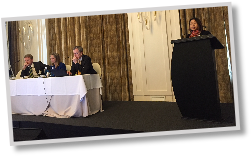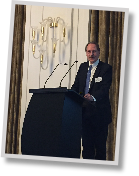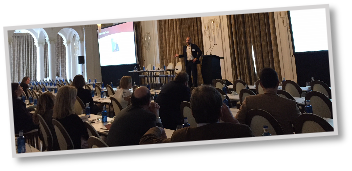
The Meeting provided an opportunity for all 21 MARQUES Teams and Task Forces to meet and to present their work to each other. A workshop, dinner and the annual Kay Uwe Jonas Memorial Lecture also took place.
 As MARQUES Chair Gregor Versondert said, the Teams are the “backbone of MARQUES” and the Spring Meeting provides an opportunity for them to compare projects and establish if there are opportunities for collaboration. Among the many projects being worked on at the moment are:
As MARQUES Chair Gregor Versondert said, the Teams are the “backbone of MARQUES” and the Spring Meeting provides an opportunity for them to compare projects and establish if there are opportunities for collaboration. Among the many projects being worked on at the moment are:
- How to write effective cease and desist letters
- The use of hashtags as trade marks
- Using copyright to protect brands
- Surveying damages awards and costs in litigation
- Perceptions of colour and shape marks
- Valuing IP assets on company balance sheets
- What an ideal opposition system looks like
- Trade marks and fake news
- The impact of the GDPR on IP, including Whois searches
- Who is the average consumer?
 Members of the relevant Teams and Task Forces also provided updates on upcoming MARQUES events, pending cases in which MARQUES has filed amicus briefs, interactions with EUIPO and WIPO, the Brexit negotiations and the development of the new MARQUES website.
Members of the relevant Teams and Task Forces also provided updates on upcoming MARQUES events, pending cases in which MARQUES has filed amicus briefs, interactions with EUIPO and WIPO, the Brexit negotiations and the development of the new MARQUES website.
Some teams are considering appointing a secretary to keep track of activities and deadlines in the coming year.
For more information about any of the Teams, see the relevant page of the MARQUES website.
Non-traditional trade marks
 This year’s Kay Uwe Jonas Memorial Lecture was given by Prof Dr Alexander von Mühlendahl (Visiting Professor, Queen Mary, University of London) on “Non-Traditional Marks Revisited”.
This year’s Kay Uwe Jonas Memorial Lecture was given by Prof Dr Alexander von Mühlendahl (Visiting Professor, Queen Mary, University of London) on “Non-Traditional Marks Revisited”.
Using lots of slides showing illustrative cases, he discussed the development of the law on non-traditional trade marks since the 1960s, covering singles letters/numbers, names, colours, combinations of colours, shapes, shape/colour combinations, sounds, smells, taste/touch and holograms. He also mentioned the new types of marks acceptable at EUIPO, such as pattern marks, motion marks and multimedia marks, and touched on certification marks.
Overall, said von Mühlendahl. Europe is “much further advanced than the US” in most respects. For colour marks, for example, it is well established that is nearly always necessary to show acquired distinctiveness. For combinations of colours, following the recent Red Bull judgment, he recommended: “Never add a description as it binds you later on.”
Regarding shape marks, von Mühlendahl said the courts have consistently refused registration without acquired distinctiveness, and the offices have become stricter in consequence. “Only 0.6% of trade marks are 3D marks, but they are interesting and economically important,” he noted.
There have been relatively few applications for new types of marks so far: 16 for holograms, 10 for patterns, 16 for motion marks and six for multimedia marks. While the registration system is opening up to these new types of marks, von Mühlendahl said the question remains: how will they be enforced in court? “Enforcing non-traditional trade marks may become complicated … To be on the safe side, try to have material available and have a written description,” he said.
Find out more about the previous Kay Uwe Jonas Lecturers here.
Tech challenges
 The annual workshop at the Spring Meeting was presented by Michael Zoebisch and Ernst-Jan Louwers of the Cyberspace Team and titled “Adapt or perish…?! Tech challenges for brand owners and IP professionals”.
The annual workshop at the Spring Meeting was presented by Michael Zoebisch and Ernst-Jan Louwers of the Cyberspace Team and titled “Adapt or perish…?! Tech challenges for brand owners and IP professionals”.
The speakers discussed new technologies such as blockchain and how these will affect the business of managing, protecting and enforcing IP rights.
Find out more about the Cyberspace Team here.
 Issue 087
Issue 087
 Issue 087
Issue 087